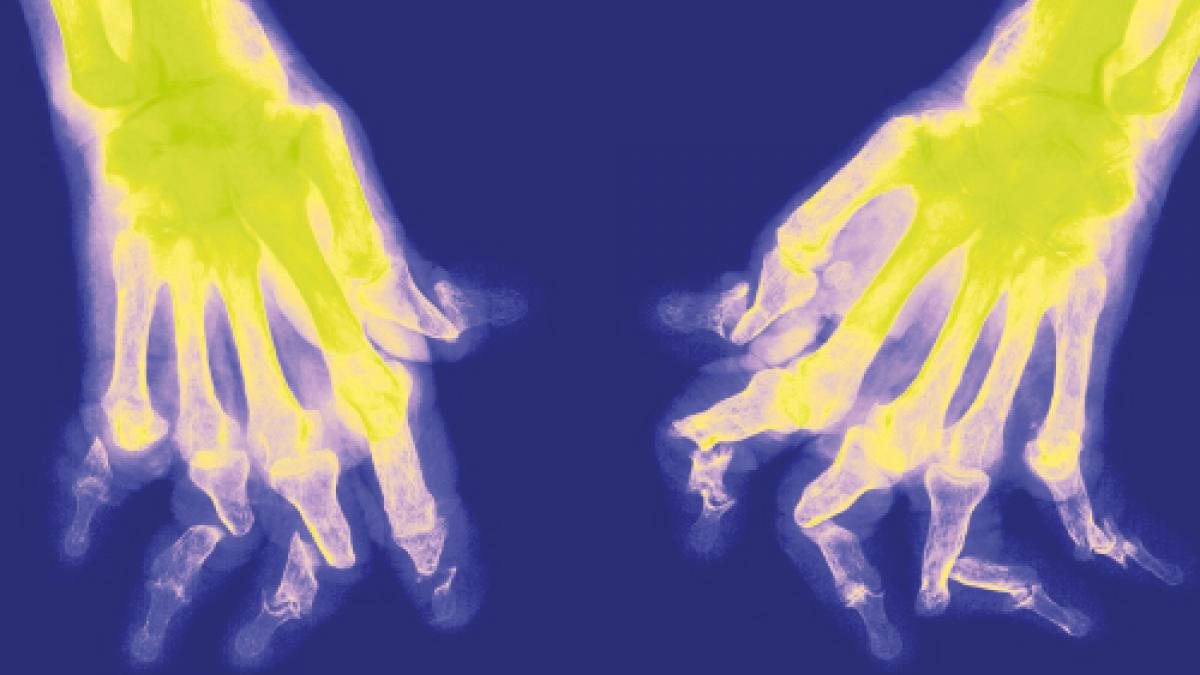Physiotherapy Journal editor Michele Harms and Caroline White report on recent research.

Psoriasis and psoriatic arthritis linked to fracture risk
Psoriasis and psoriatic arthritis are linked to a heightened risk of osteoporotic fracture, a large long term study of UK adults has found.
The researchers base their findings on 20 years of data (1994-2014) from The Health Improvement Network (THIN) relating to nearly one million 18- 89 year olds with psoriatic arthritis; 158,323 with psoriasis; and a comparison group of 821,834 without either condition.
Known risk factors for osteoporosis were more common among patients with psoriasis and psoriatic arthritis: they were more likely to have been prescribed proton pump inhibitors and antidepressants; to be diabetic; and to smoke and drink more heavily than those in the comparison group.
But after accounting for influential factors, patients with psoriatic arthritis were between seven per cent and 26 per cent more likely to have sustained a fracture than people in the comparison group.
Severe psoriasis was associated with a 26 per cent increased risk of any fracture and a more than doubling in vertebral fracture risk. But even mild psoriasis was associated with a 17 per cent increased risk of vertebral fracture and a 13 per cent heightened risk of hip fracture.
Overall fracture risk among patients with psoriatic arthritis or severe psoriasis was similar to that associated with rheumatoid arthritis, the findings showed.
Fractures cause pain, immobility, loss of independence, isolation and depression, as well as several other health problems, the researchers point out. And one in two women and one in five men will sustain a fracture after the age of 50, with associated hospital admissions more common than those for heart attack and stroke combined, they add. So it’s still worth testing patients with psoriasis or psoriatic arthritis for osteoporosis they conclude. Ogdie A, et al. Annals of the Rheumatic Diseases 2017.
Journal Findings
Michele Harms looks at the latest studies from the Physiotherapy Journal
Best post-op physiotherapy for knee replacement
This systematic review, conducted in Australia, aimed to identify the most beneficial active physiotherapy interventions to include in a post-operative regime following total knee arthroplasty (TKA).
The authors included 11 randomised controlled trials with 1,197 participants, which met their inclusion criteria for review and meta-analysis. They incorporated an analysis of hydrotherapy, accelerated therapy programmes, additional exercises, frequency of rehabilitation and technology-assisted physiotherapy. Their findings suggest that accelerated physiotherapy regimens were effective for reducing length of stay by an average of three days, although the findings were classified as ‘low evidence’. Also that activity and range of motion improved with accelerated regimens and activity improved with hydrotherapy. Active physiotherapy interventions following total knee arthroplasty in the hospital and inpatient rehabilitation settings. A systematic review and meta-analysis Henderson KG, Wallis JA, Snowdon DA.
Hip fracture and dementia
Scoping reviews have gained in recent popularity. They are used to summarise available research findings, identify gaps in the literature and can be used to inform systematic reviews. In this review the authors asserted that people with dementia are almost three times as likely to suffer from a hip fracture than those without. Although they identified 26 relevant studies, the authors found a dearth of evidence on the perceptions and experiences of dementia patients or physiotherapists working in this area. This allowed them to conclude that, due to a lack of high quality research in this area, undertaking a systematic review at the present time is not appropriate or necessary. Physiotherapy interventions for people with dementia and a hip fracture − a scoping review of the literature. Hall AJ, Lang IA, Endacott R, Goodwin VA www.physiotherapyjournal.com/article/S0031-9406(17)30002-0/pdf
How much therapy is enough?
The authors of this paper question whether higher doses of therapy/training always produce better recovery. It poses the question ‘How can optimal therapeutic doses of specific interventions be derived?’ In a collaboration between the University of East Anglia and Washington University School of Medicine in St Louis, this group of researchers developed a rule-based, dose-finding design for stroke rehabilitation research.
Their aim was to look at, and potentially adapt, an appropriate model used routinely in pharmaceutical research, to establish a dose-finding design for stroke rehabilitation research. Essentially, the model tested balanced benefit to the patient against tolerance of the intervention, with the goal of dose optimisation. This dose-finding design was found to be feasible, and could help the researcher to identify the maximum tolerable dose (MTD) and recommended Phase II dose (RPTD) which could be used to plan future studies. A rule-based, dose-finding design for use in stroke rehabilitation research: methodological development Colucci E, Clark A, Lang CE, Pomeroy VM
More information
These reports feature online in the CSP journal, Physiotherapy. CSP members can access them free of charge online, via the CSP website.
Comments & conclusions
- Hand grip strength is a better indicator of declining muscle power in patients with Parkinson’s disease than either walking speed or balance. So concludes a monitoring study of leg and arm muscle electrical activity in 37 people aged 50 and above with (23) and without (14) the condition. When gait, balance, and grip strength were measured in all participants: grip strength proved the best predictor of muscle activity in those with Parkinson’s disease. Jones GR, et al. Archives of Physical Medicine and Rehabilitation 2017.
- A combination of depleted iron stores and poor aerobic fitness may curb women’s academic prowess, suggests a small US study of 105 female college students aged between 18 and 35. After factoring in age, parental occupation, and motivation, women with both good iron stores and a high level of aerobic fitness achieved the highest grades, on average, while those at the other end of the spectrum, on both counts, achieved the lowest – and enough for a letter grade difference. Scott SP, et al. The Journal of Nutrition 2017 doi:10.3945/jn.116.240192.
Author
Caroline Wright and Michelle Harms
Number of subscribers: 1




































